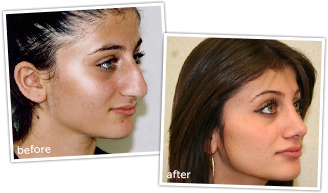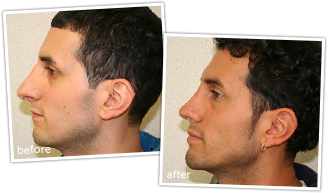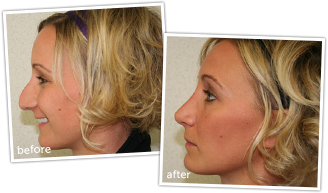The Extended Abdominoplasty Offers Excellent Results

An extended abdominoplasty is recommended for those who have excess skin that extends from their abdominal area to their flanks (love handles). Such patients usually also have laxity in the abdominal muscles.
It was noticed that in some of the patients who undergo the tummy tuck surgery, even thought there was significant improvement in the abdominal area, the back area and the flank still had extra folds of fat and skin. This is why the extended abdominoplasty was developed.
In an extended abdominoplasty, large amounts of flank and abdominal tissue are eliminated and tightening of the abdominal muscles takes place. Thousands of people have reported excellent results after the extended abdominoplasty surgery.
Why Extended Abdominoplasty?
The idea behind the extended abdominoplasty procedure is to help those who have a greater amount of loose skin as compared to the full tummy tuck candidates but still not enough for them to get a lower body lift or circumferential tummy tuck. Like all other cosmetic surgeries requiring excess-skin removal, the length of the incision in an extended abdominoplasty is decided by what would help achieve the most aesthetically appealing contours. Your plastic surgeon will try and make a fine incision that can be properly hidden and does not bother the patient.
How Does This Procedure Work?
For the extended abdominoplasty, your surgeon will make an incision that goes along the entire abdominal length, extending back all the way to the hips. The exposed muscles are tightened by the surgeon, creating a new navel that matched the reconstructed body shape of the patient.
In some cases of extended abdominoplasty, liposuction may also be used by the surgeon for achieving improved results. Once the extra skin gets trimmed off from the hips, abdomen, back, and flanks, sutures are used for closing the incisions.
Am I a Candidate for an Extended Abdominoplasty?
Suitable candidates for the extended abdominoplasty procedure may be experiencing the following issues:
• Excessive skin hanging around the waist and abdomen
• A stretched layer of abdominal muscle that causes a bulge to appear at the abdomen
• Excess skin in the lower abdominal area that tends to extend sideways
• Hanging abdominal skin with visible folds
• Droopy and loose tissue in the pubic area
• Visible stretch marks on the abdominal area and the flanks
What to Expect from Recovery
The extended abdominoplasty procedure requires a significantly long incision to be made in the abdominal area, so this will take time to heal. Patients are generally required to stay at the hospital facility after the surgery for a day or so.
The surgeon will likely place drainage tubes under your skin in order to prevent fluid from accumulating, helping to avoid complications. This also helps in the proper healing of the incision. The drainage tubes are likely to be removed about a week or two after the surgery. You may be prescribed certain pain medications in order to relieve discomfort. It is a good idea to get somebody to help you around the house for a couple of days and to drive you home after the surgery.
Set Up an Informative Consultation
Discuss your abdominoplasty goals with Dr. Elias Gikas, a board-certified plastic surgeon with years of experience. With the help of Dr. Gikas, you can achieve a sculpted midsection and flanks. Contact us to schedule a consultation.



